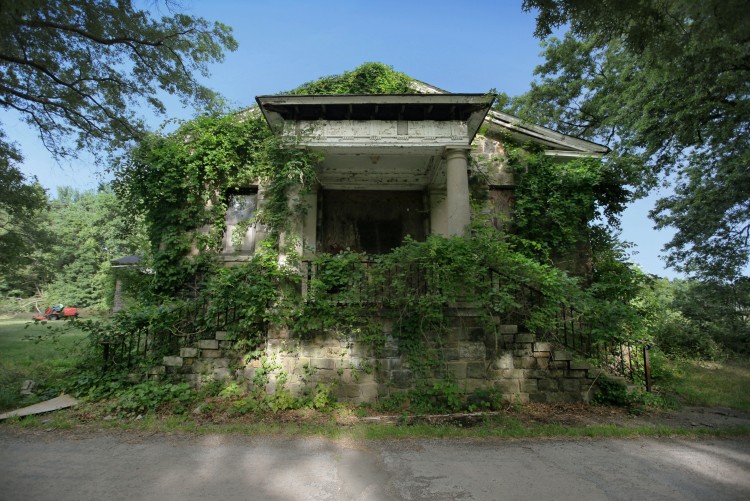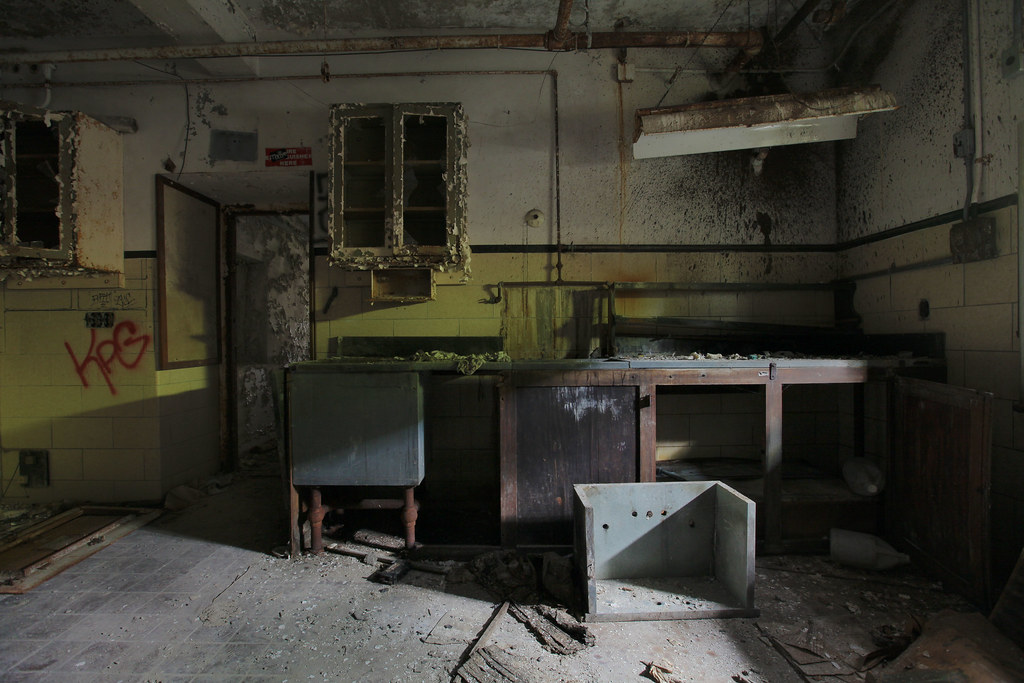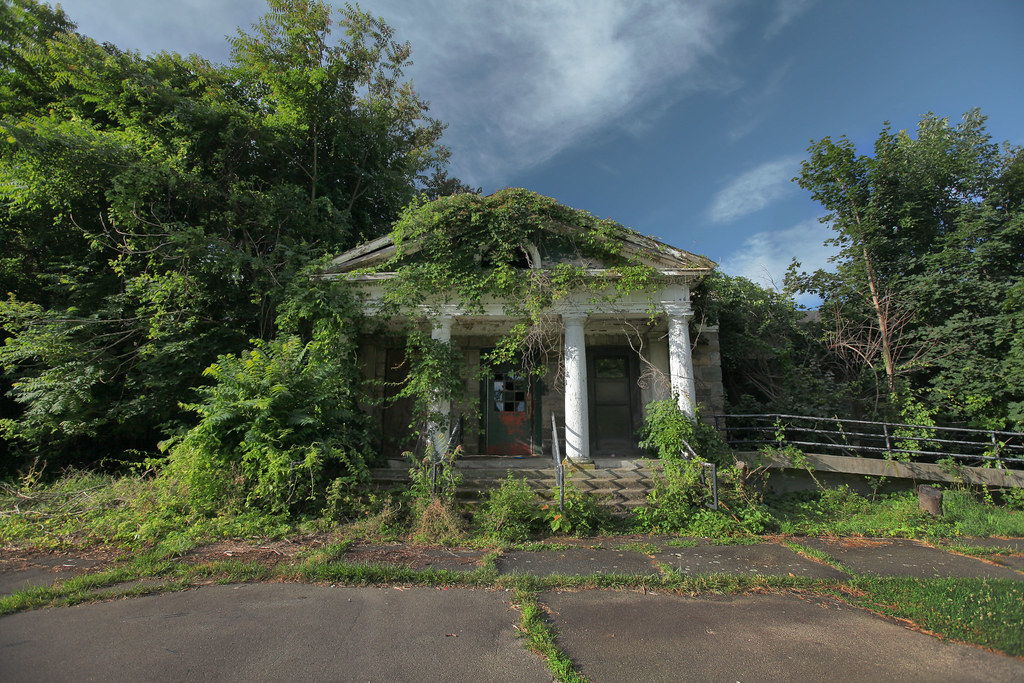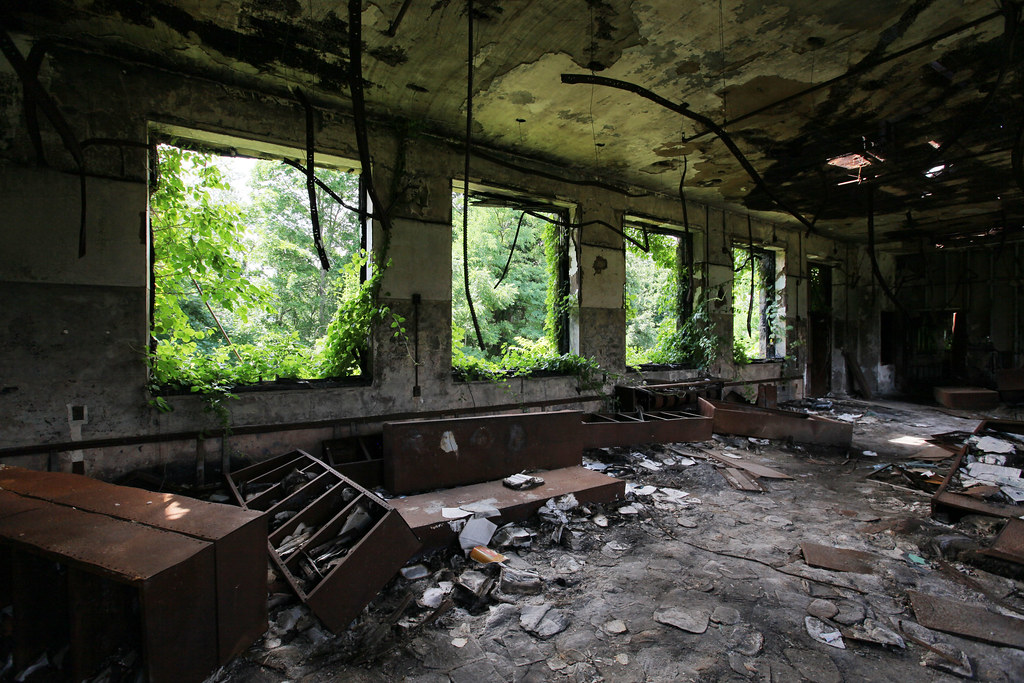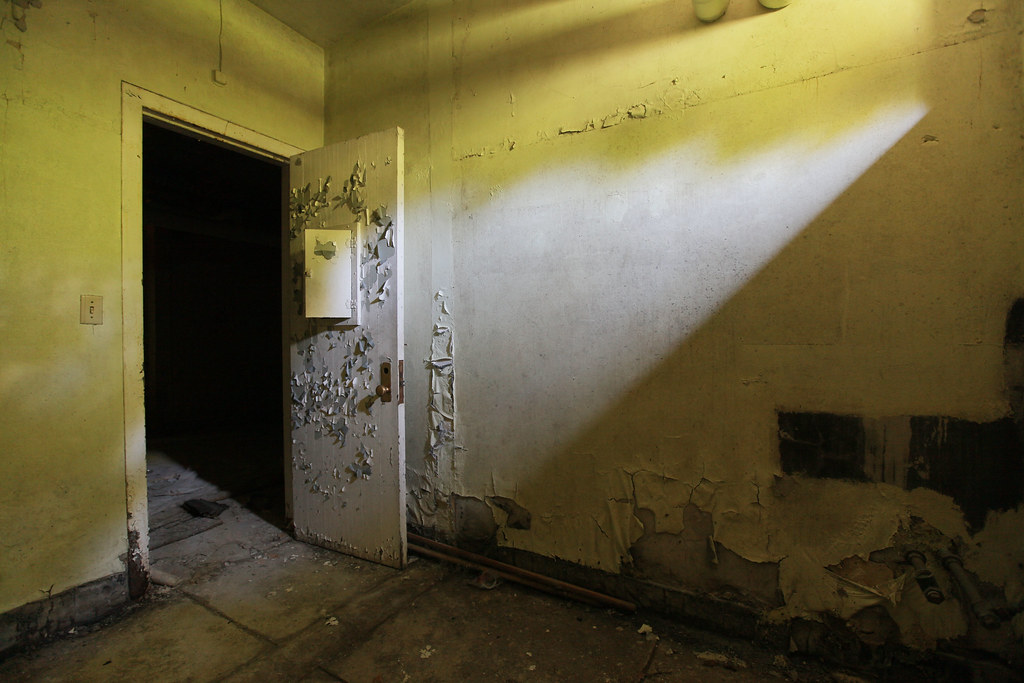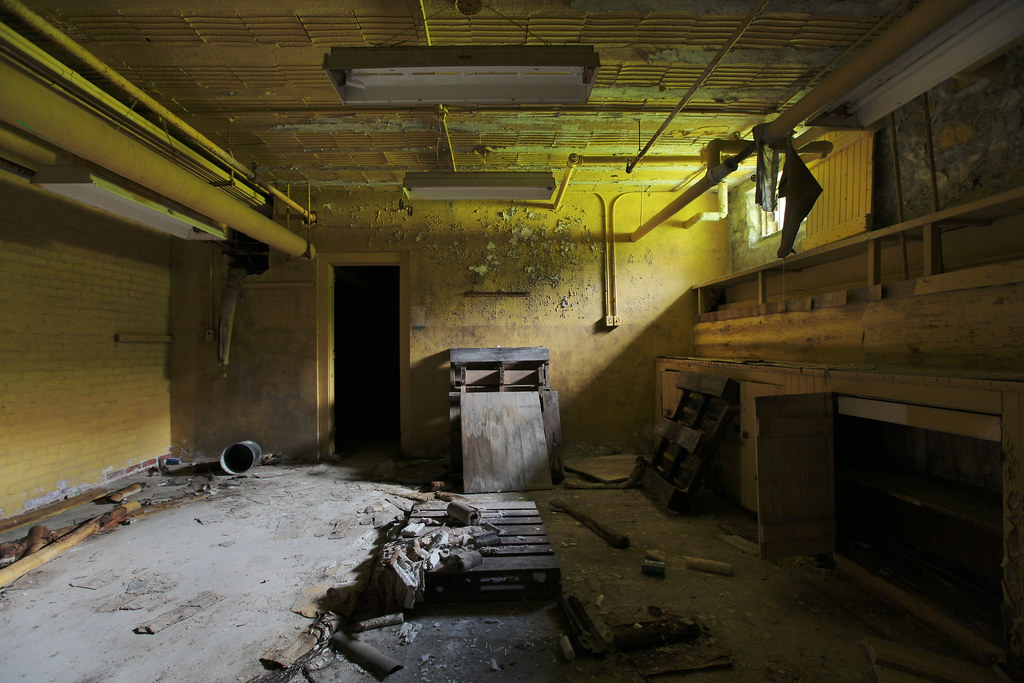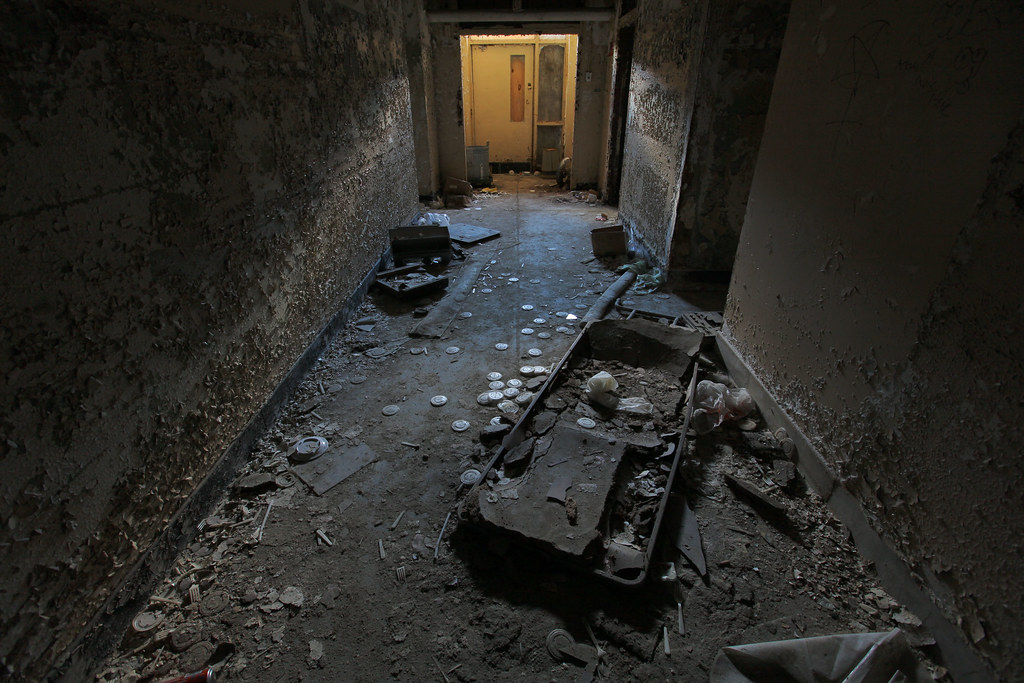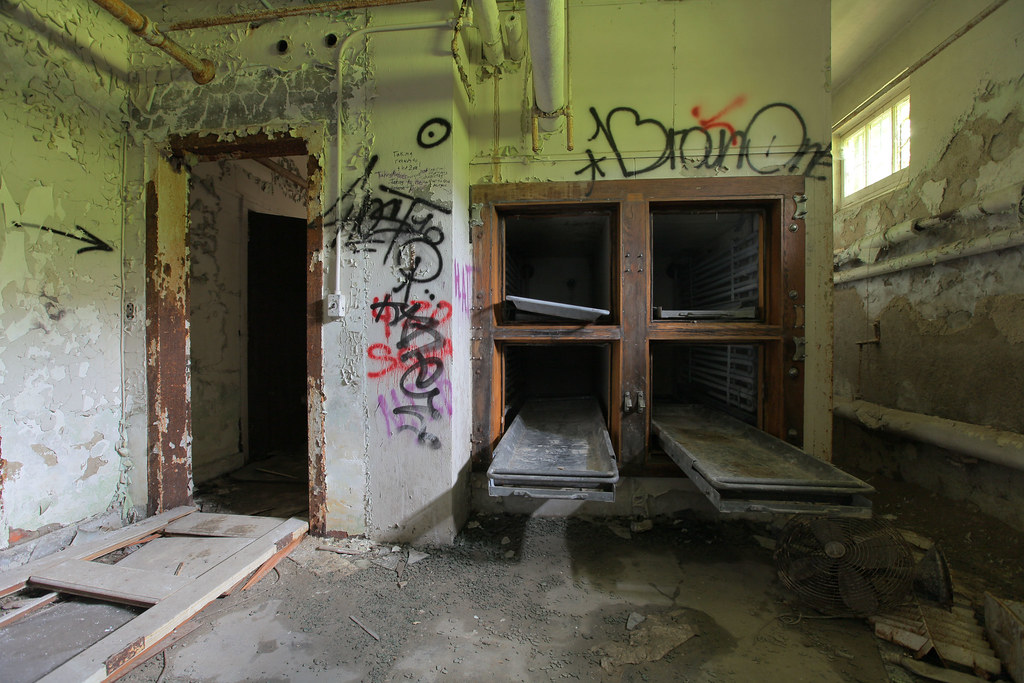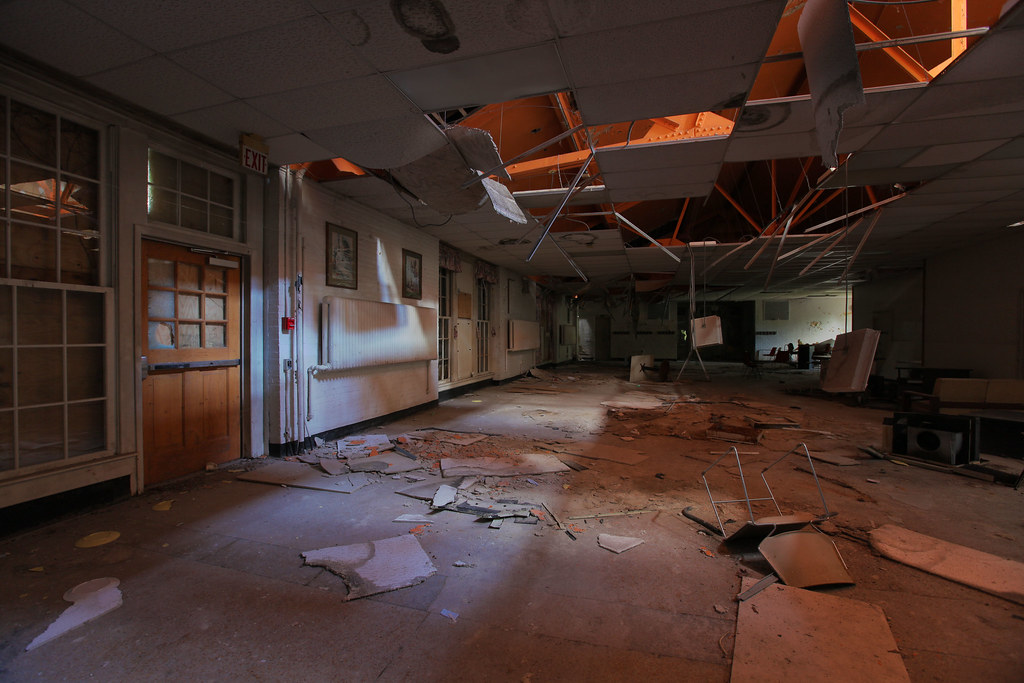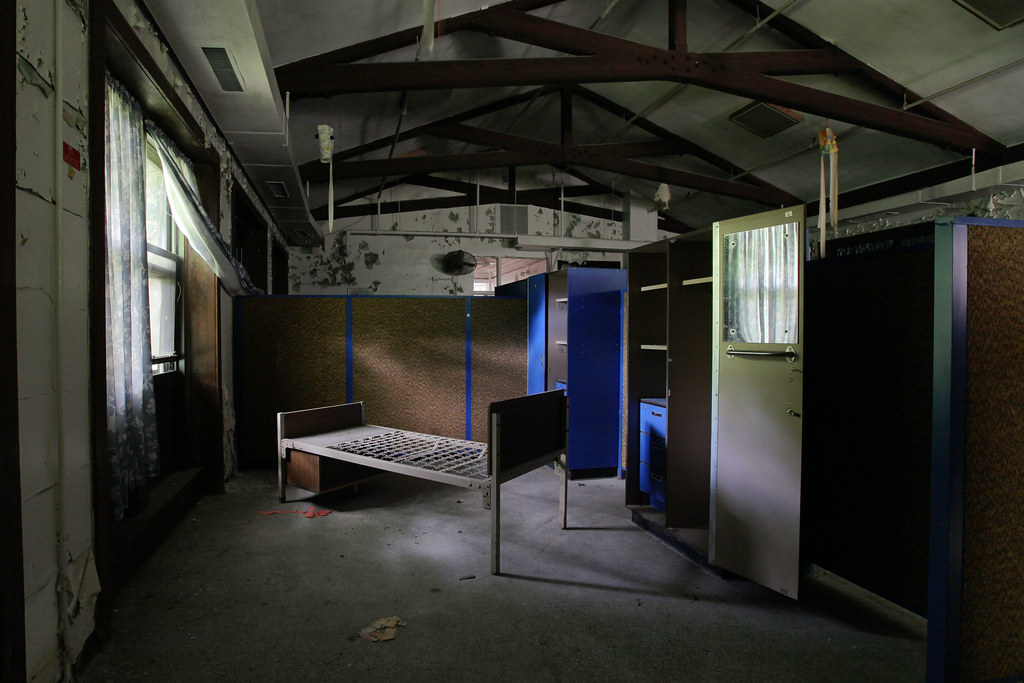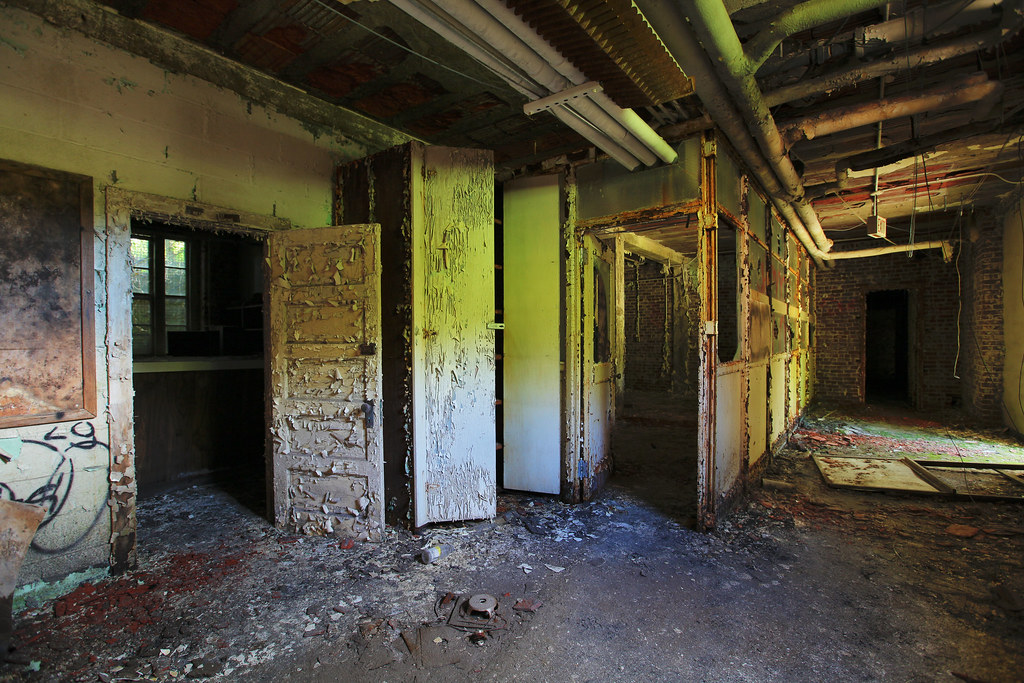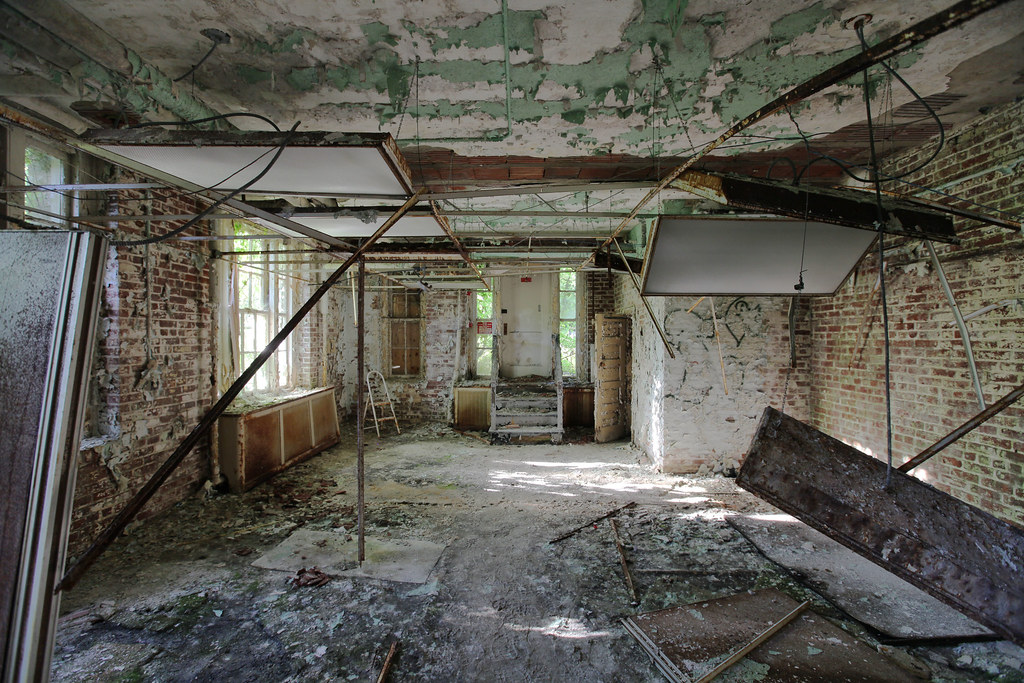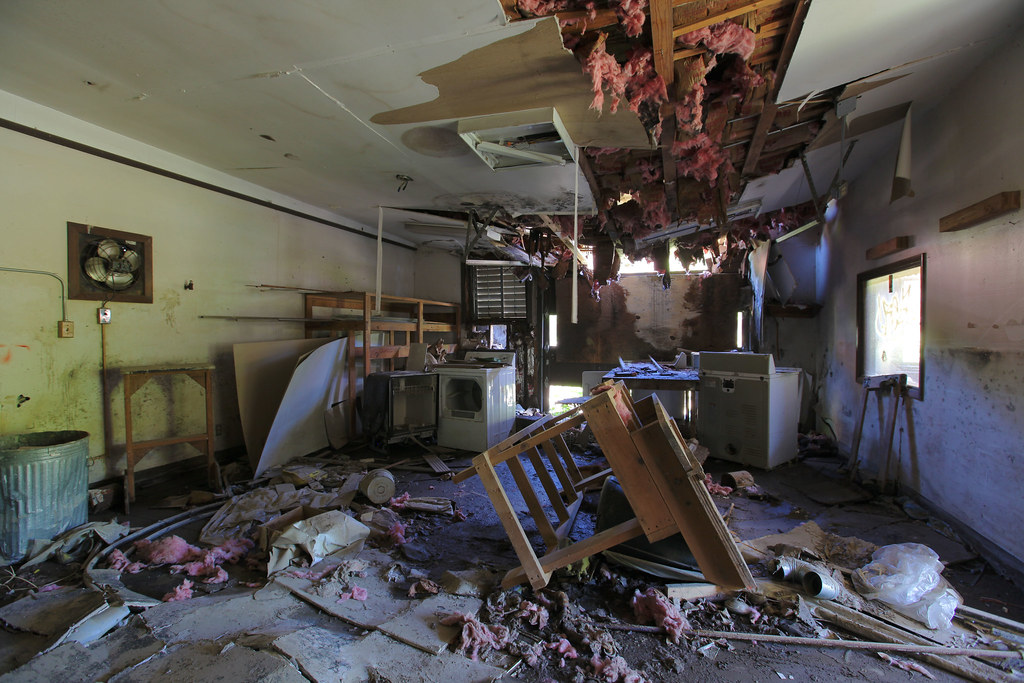Letchworth Village rests on a placid corner of rural Thiells, a hamlet west of Haverstraw set amid the gentle hills and vales of the surrounding Ramapos. A short stretch of modest farmhouses separates this former home for the mentally disabled from the serene Harriman State Park, New York’s second largest. Nature has been quick to reclaim its dominion over these unhallowed grounds, shrouding an unpleasant memory in a thick green veil. Abandonment becomes this “village of secrets,” intended from its inception to be unseen, forgotten, and silent as the tomb.
Owing to its reputed paranormal eccentricities, Letchworth Village has become a well-known subject of local legend. These strange tales had me spooked as I turned the corner onto Letchworth Village Road after a suspenseful two-hour drive from Brooklyn. Rounding a declining bend, I caught my first glimpse of Letchworth’s sprawling decay—some vine-encumbered ruin made momentarily visible through a stand of oak. Down the hazy horseshoe lanes of the boy’s ward, one by one, the ghosts came out.
By the end of 1911, the first phase of construction had completed on this 2,362 acre ”state institution for the segregation of the epileptic and feeble-minded.” With architecture modeled after Monticello, the picturesque community was lauded as a model institution for the treatment of the developmentally disabled, a humane alternative to high-rise asylums, having been founded on several guiding principles that were revolutionary at the time.
The Minnisceongo Creek cuts the grounds in two, delineating areas for the two sexes which were meant never to mingle. Separate living and training facilities for children, able-bodied adults, and the infirm were not to exceed two stories or house over 70 inmates. Until the 1960s, the able-bodied labored on communal farms, raising enough food and livestock to feed the entire population.
Sinister by today’s standards, the “laboratory purpose” was another essential tenet of the Letchworth plan. Unable to give or deny consent, many children became unwitting test subjects—in 1950, the institution gained notoriety as the site of one of the first human trials of a still-experimental polio vaccine. Brain specimens were harvested from deceased residents and stored in jars of formaldehyde, put on display in the hospital lab. This horrific practice has become a favorite anecdote of ghost-hunters and adolescent explorers.
The well-intentioned plans for Letchworth Village didn’t hold up in practice, and by 1942, the population had swelled to twice its intended occupancy. From here, the severely underfunded facility fell into a lengthy decline. Many of the residents, whose condition necessitated ample time and attention for feeding, became seriously ill or malnourished as a result of overcrowding. At one point, over 500 patients slept on mattresses in hallways and dayrooms of the facility, meagerly attended by a completely overwhelmed staff tasked with the impossible.
Having discontinued the use of the majority of its structures, and relocated most of its charges into group homes, the institution closed down in 1996 as old methods of segregating the developmentally disabled were replaced with a trend toward normalization and inclusion into society. The state has made efforts to sell the property, with mixed results. Most of the dilapidated structures were slated for demolition in 2004 to make way for a 450-unit condo development, but the plan has evidently been put on hold. Ringed with ballfields and parking lots, shiny Fieldstone Middle School makes use of nine buildings of the former girl’s group, an island of promise in a landscape of failure.
Today, the rest of the neglected campus retains a kind of elegiac beauty. With its meandering walkways, pleasant natural setting, and evocative decay, it’s a peaceful spot for small town dog owners and amateur photographers alike, but by night a new breed of visitors descends upon these grounds.
Embarked on by the young and curious, a moonlit pilgrimage to a haunted location promises a brush with the unknown and an affirmation of courage—it’s a ritual that’s become commonplace at Letchworth Village. Pervasive graffiti and piles of beer cans and snack packaging mark the most popular hangouts. Much of the writing alludes to the institution’s allegedly horrific past, or warns of its vengeful spirits. Is it all just for teenage kicks, or are these acts of remembrance?
Within a crumbling fieldstone facade, one of Letchworth’s most impressive structures has been reduced to an ugly black skeleton. It’s the most evident of an outbreak of arson attempts that plagues the property, but not the most successful—some blazes don’t leave a trace. Perhaps without knowing it, these amateur arsonists, vandals, and spiritualists are quickly scouring away a shameful memory, absolving a collective guilt with paintballs, matchbooks, and pentagrams.
In a little-known and easy-to-miss cemetery about a mile from the facility, amends are being made more constructively.
Off Call Hollow Road, a new sign has been erected pointing out the “Old Letchworth Village Cemetery.” Down a seldom-traveled path, an unusual crop of T-shaped markers congregate on a dappled clearing. They’re graves, but they bear no names.
Few wished to remember their “defective” relatives, or have their family names inscribed in such a dishonorable cemetery—many family secrets are buried among these 900 deceased. Here, in the presence of so many human lives devalued, displaced, and forgotten, the sorrow of Letchworth Village is keenly felt.
As part of a movement taking place across the country, state agencies and advocates funded the installation of a permanent plaque inscribed with the names of these silent dead, and a fitting epitaph: “To Those Who Shall Not Be Forgotten.”
More than ghost stories, bursts of cool air, shadows and slamming doors, we fear our capacity for cruelty and our willingness to overlook those who most needed our care and understanding. Letchworth Village isn’t a house of horrors, but it has become a thing of the past, and a symbol of these failings. Now, its ruins are vanishing—any moment, they’ll powder to dust, dirt, and ash. Who will mourn when the village crumbles, and what will remain? Soot-black foundations, half-remembered histories, and nine hundred numbered graves, poignant reminders of an all-too-recent injustice.
-Will Ellis
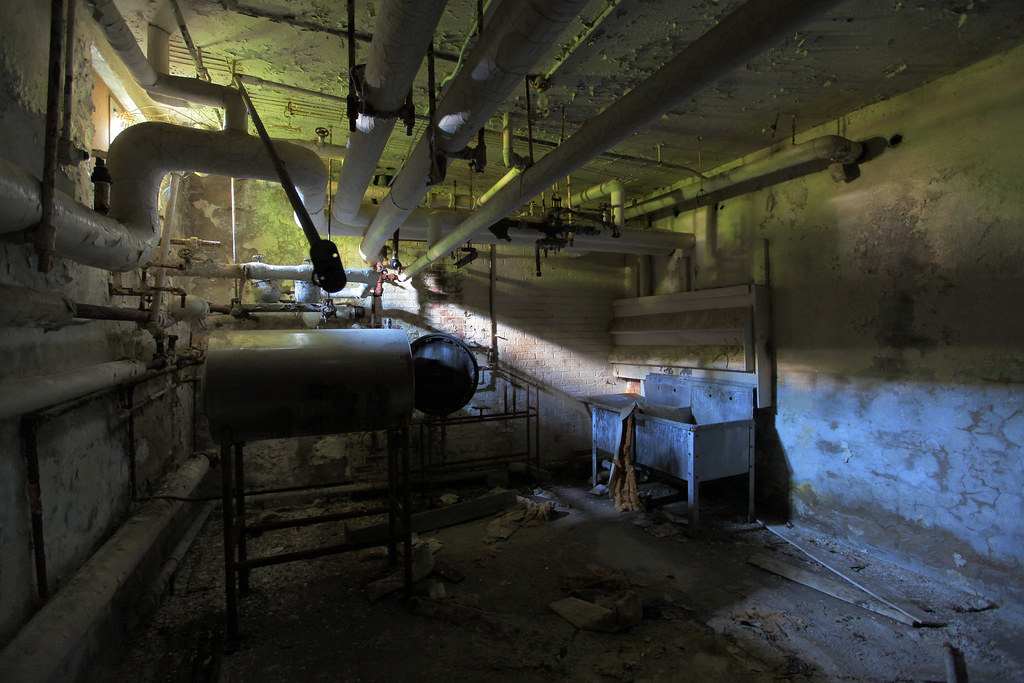
Moments after taking this photo, a group of young explorers entered through a side door. I gave them quite a scare.
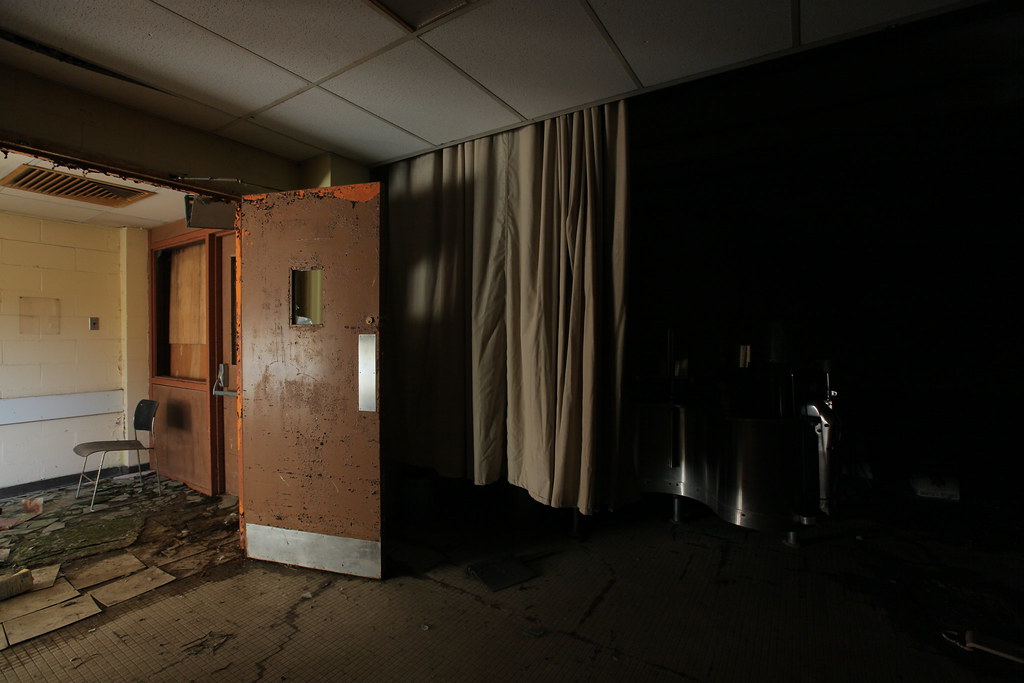
A strange camera malfunction lasted the entire time I was in this building and stopped the moment I stepped out. It’s the closest I came to a paranormal experience.

Plastic foliage survived a blaze that threatened to take down a two-story building, most recently used for storage.
Related Links:
- Disability History Museum—Survey of Letchworth Village, 1912
- Willowbrook: The Last Great Disgrace, Geraldo Rivera’s 1972 exposé
- NY Times 2004—”At Former Hospital; 450 Condos Set for Haverstraw”
- NY Times 2007—”Giving Names to Souls Forgotten No Longer”
- NY Times 1970−”New Approaches to the Retarded Bring Increased Hope”

